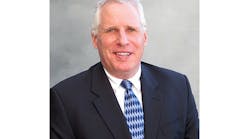It's forecasting season, and you can't swat a fly these days with a rolled up copy of the Wall Street Journal without knocking over an economist or two who's eager to give you their 2013 economic forecast.
I don't envy economists in this business climate. Who wants to hear about yet another year of slow growth when you are dying to get back to the good old days, like the mid-1990s or 2005-2007? It's feels like we're puttering along in a 2013 Corvette Stingray at 25 mph, when all we really want to do is punch down the gas pedal and let 'er rip to see how fast it can go.
It's frustrating with a capital “F.” The other day I was thinking back to those days of milk-and-honey when the economy was really cooking. I couldn't get the lyrics to that 1968 Top 10 hit popularized by Mary Hopkins, “Those Were the Days” out of my head:
“Those were the days, my friend…We thought they'd never end. We'd sing and dance forever and a day… We'd live the life we choose. We'd fight and never lose… Those were the days.”
Well, those days ended when billions of dollars in toxic residential mortgages went kerplooey, draining billions of dollars out of the global economy and pushing the world into a recession of historic proportions. According to a recent report by the Federal Reserve Bank of Minneapolis, out of the 10 recessions the U.S. economy has experienced since 1946, the recession of 2007-2009 was by most measures the worst.
We are still climbing out of that hole. It's easy to get frustrated by the slow pace of recovery, but when you have been through the worst recession in 50 years, it's going to take some time to rebuild the foundation of the economy.
In one example of just how much ground the economy needs to make up, Karl Case, an economist who's one of the co-creators of the S&P Case Shiller Index of real estate prices, said at the recent McGraw-Hill Construction Outlook Executive Conference that although September's 15% increase in housing starts pushed over 800,000 for the first time in 48 quarters, that mark is the 50-year low-water mark in housing starts.
Another speaker a that conference, Julian Anderson, president of Rider Levett Bucknall, a global property management firm, said total housing starts need to get up to an annual rate of 1.5 million units just to reach a level generally considered to be sustainable in this improving economy. They don't need to hit the 2 million starts that were seen at the high-water mark of the housing bubble (2005), when, said Anderson, homebuilders were annually building 500,000 more homes each year than the market really needed.
It takes a long, long time to soak up that kind of excess. But that was just one huge mess in the construction market that a had a massive impact on the fortunes of the electrical market. There was the credit crisis that took out available funds to finance projects. And how about all those markets with office vacancy rates topping 20%? And none of us need to be reminded about the impact unemployment has had on the economy and on the psyche of consumers.
The malaise was indeed far-reaching. Said Robert Murray, vice president of economic affairs, McGraw-Hill Construction, in his company's 2013 Construction Forecast, “It's kind of been a long slog. The question is, ‘Are we going to be able to break free of it?’ We have stretched out the process of turning the corner ever so slowly.”
Once Congress engineers a workable response to the fiscal cliff, Murray said he would be confident that the overall construction market will pick up the pace. That's good news for distributors, reps, manufacturers and their customers, because the construction market is such a huge piece of their business.
We have all been through a lot, but it appears the industry is finally moving in the right direction. So next time you meet an economist, don't give him a hard time about his or her slow-growth forecast. Give 'em a hug.








